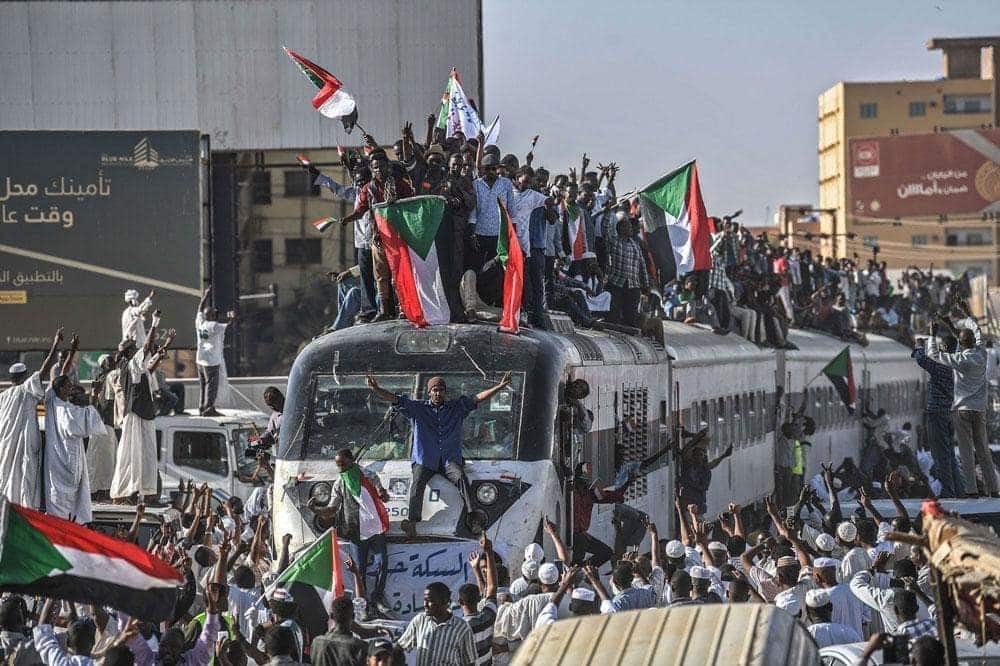
Peaceful protests in Sudan began on 19 December as a reaction to higher prices. Within a month, President Omar al-Bashir vowed to stay in power on January 9 despite the demand for his resignation by the protesters. When I offered my analysis of the situation in Sudan in early February I stated that Bashir will continue his reign, as regime change seemed close to impossible at the time. This was due to the lack of significant support externally from states or organizations, as well as internally from security forces. Recent developments, however, indicate that there might be a shift within the armed forces. If so, the situation in Sudan can develop fast and drastically.
What’s New?
On 23 February, Bashir imposed a state of emergency, consolidating power to himself while dismissing the federal government and sacking state governors. He then re-instated five trusted ministers of the government and appointed security personnel to govern the provinces. The state of emergency decree authorizes Sudan’s security establishment to;
- Search any building.
- Restrict movement of people.
- Arrest people violating the decree.
- Seize assets during investigations.
Violating the decree is punishable by up to 10 years in prison. Despite imposing a de facto military rule through the state of emergency decree, protesters have remained resistant and continued to take to the streets to voice their demands.
Protests and crackdowns then followed steadily with little development or indicators of reconciliation. Then, on 6 April, the Sudanese Professionals Association (SPA) issued a statement where it called upon officers, non-commissioned officers, and soldiers of the Sudanese armed forces to align with the people and join their cause. It further stated their grievances to justify the objective, ending that ‘we are fully confident that the people will win. That is what history teaches us, but few tyrants take heed.’
The same day, the largest mass of protesters since the imposed state of emergency gathered outside the army headquarters in Khartoum. The compound which is the heaviest guarded in the nation is symbolic due to the uprising that toppled President Jaafar Nimeiri 6 April 1985. The mass remained outside the military complex until the morning of Sunday 7 April. The same evening, the mass gathered again for a second night.
As usual, security forces swooped in to break up protests with various tools such as tear gas and even live rounds. According to some reports, this time the security forces had been given the authorization to use excessive force in masse to disperse and demotivate the protesters. The security forces given the authorization are reported to be the National Intelligence Security Service (NISS) and Popular Defence Forces (PDF), which is described more in the previous article. However, as the security forces moved on the protesters, soldiers of the Sudanese Armed Forces (SAF) reportedly took positions between protesters and security forces and fired live rounds in the air to avoid bloodshed.
So What?
Up until this point, the security apparatus has seemed unified and loyal to Bashir – and the majority probably are, especially officers and leaders within NISS, PDF, and special police units who Bashir prioritized when he built security institutions to protect his regime. The army, however, seems to start cracking. It is not realistic at this point to assume officers in key positions have turned against Bashir but evidently, there are some dissidents in the ranks. The sympathy for the protesters is likely formed by soldiers on a unit-level and not formed by commands coming from the top or even high up in the hierarchy. However, such sympathy can have a domino effect adding numerous soldiers to the ranks of dissidents which will make a successful regime change become more likely as time goes on.
On another note, some reports have drawn the parallel between Bouteflika in Algeria who gave in to the protesters demands and resigned less than a week ago. However, one notable difference between the two is that Bashir would risk prosecution by the International Criminal Court (ICC) if he resigned. In such, there is little reason to believe that Bashir will give up power peacefully. Moreover, the sympathy for protests within the armed forces of Sudan symbolize the growing polarization between Bashir and the people. In a worst-case scenario, if Bashir continues to refuse to give up on power while resistance and political polarization grow, there is a risk violent clashes and potential for civil war. However, what seems certain at this point is that the protests have gained new unprecedented momentum and things could develop rapidly.
Image: Al Taghyeer (link)

